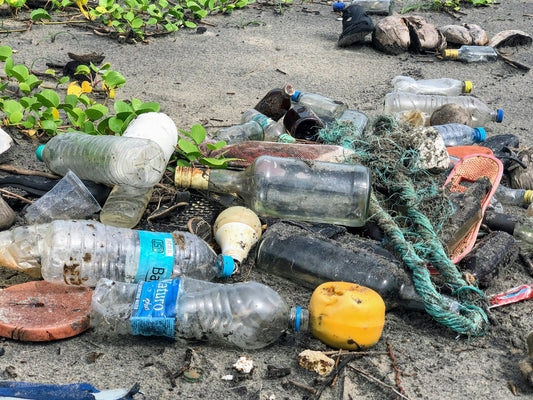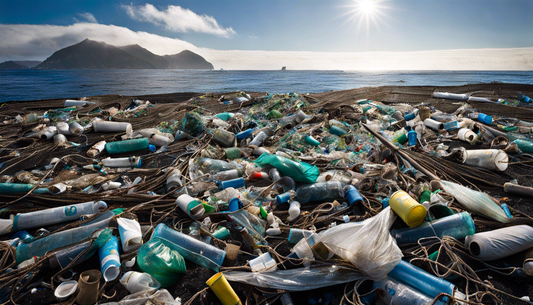Share
A Toxic Situation:
There's more than just a bit of heated conversation happening down in Los Angeles! Over the weekend, a significant number of demonstrators rallied against the Environmental Protection Agency's (EPA) new clean-up strategy for dealing with the remnants of the Palisades fire. And their proposed method of action has certainly ruffled a few feathers! They're planning to use a popular local beach as a toxic waste sorting site.
Save Our Beaches:
"Save Our Beaches!" That's the cheer that echoed through the surf and sand as protesters voiced their disapproval of the plan. Arguing that wildfire debris isn't just ash, but poison, they fear the toxins from the wildfire debris could seep into soil and waterways, compromising air quality. As if the thought of dirty air wasn't concerning enough, the risk to our ocean's health is equally as disturbing.
The Rubble Dilemma:
But it's more than just one beach under scrutiny in this fiesty debate — many other areas affected by fires are also raising concerns. With the Palisades and Eaton fires having destroyed a staggering 16,200 structures, there's a whole lot of damage and plenty of ash and debris to be dealt with. And this hazardous material includes everything from burned-out cars and propane tanks, to pool chemicals, paint and highly toxic insulation with asbestos.
A Race Against Time:
The need to act swiftly is critical. Winds and rain could transport tiny pieces of toxic material into sensitive regions, so time is of the essence. The EPA aims to clean up these hazardous substances in a month — an ambitious target particularly given the size of the task at hand. After similar disasters in Maui, it took the agency over three months to remove hazardous materials from just a fraction of the properties affected in the Palisades and Eaton fires.
Stirring Up the Dust:
The second phase of the cleanup, featuring the removal of the residue around burnt structures, has already begun. The list is long and includes chimneys, dangerous trees, ash and up to six inches of soil. But amidst the haste to tidy up, some residents worry that the rush could blur the lines between what's toxic and what's not. The fact that recent rains have carried ash and other runoff into Santa Monica bay further complicates the situation.
Despite this, all stakeholders seem to agree that swift cleanup is needed, even though each decision is bound to upset some. As Annelisa Moe, an associate director at a local environmental non-profit, aptly pointed out, there are, unfortunately, no good answers for toxic cleanup, only the least worst options. In a situation like this, every location will be important to someone. But with the right strategies, some places might be easier to contain than others.
There's more than just a bit of heated conversation happening down in Los Angeles! Over the weekend, a significant number of demonstrators rallied against the Environmental Protection Agency's (EPA) new clean-up strategy for dealing with the remnants of the Palisades fire. And their proposed method of action has certainly ruffled a few feathers! They're planning to use a popular local beach as a toxic waste sorting site.
Save Our Beaches:
"Save Our Beaches!" That's the cheer that echoed through the surf and sand as protesters voiced their disapproval of the plan. Arguing that wildfire debris isn't just ash, but poison, they fear the toxins from the wildfire debris could seep into soil and waterways, compromising air quality. As if the thought of dirty air wasn't concerning enough, the risk to our ocean's health is equally as disturbing.
The Rubble Dilemma:
But it's more than just one beach under scrutiny in this fiesty debate — many other areas affected by fires are also raising concerns. With the Palisades and Eaton fires having destroyed a staggering 16,200 structures, there's a whole lot of damage and plenty of ash and debris to be dealt with. And this hazardous material includes everything from burned-out cars and propane tanks, to pool chemicals, paint and highly toxic insulation with asbestos.
A Race Against Time:
The need to act swiftly is critical. Winds and rain could transport tiny pieces of toxic material into sensitive regions, so time is of the essence. The EPA aims to clean up these hazardous substances in a month — an ambitious target particularly given the size of the task at hand. After similar disasters in Maui, it took the agency over three months to remove hazardous materials from just a fraction of the properties affected in the Palisades and Eaton fires.
Stirring Up the Dust:
The second phase of the cleanup, featuring the removal of the residue around burnt structures, has already begun. The list is long and includes chimneys, dangerous trees, ash and up to six inches of soil. But amidst the haste to tidy up, some residents worry that the rush could blur the lines between what's toxic and what's not. The fact that recent rains have carried ash and other runoff into Santa Monica bay further complicates the situation.
Despite this, all stakeholders seem to agree that swift cleanup is needed, even though each decision is bound to upset some. As Annelisa Moe, an associate director at a local environmental non-profit, aptly pointed out, there are, unfortunately, no good answers for toxic cleanup, only the least worst options. In a situation like this, every location will be important to someone. But with the right strategies, some places might be easier to contain than others.
We hope you enjoyed this article. Please feel free to leave a comment below if you want to engage in the discussion.
If you want to read more like this, make sure to check out our Blog and follow us on Instagram. If you are interested in truly sustainable products, check out our Shop.
Check out the original source here.








